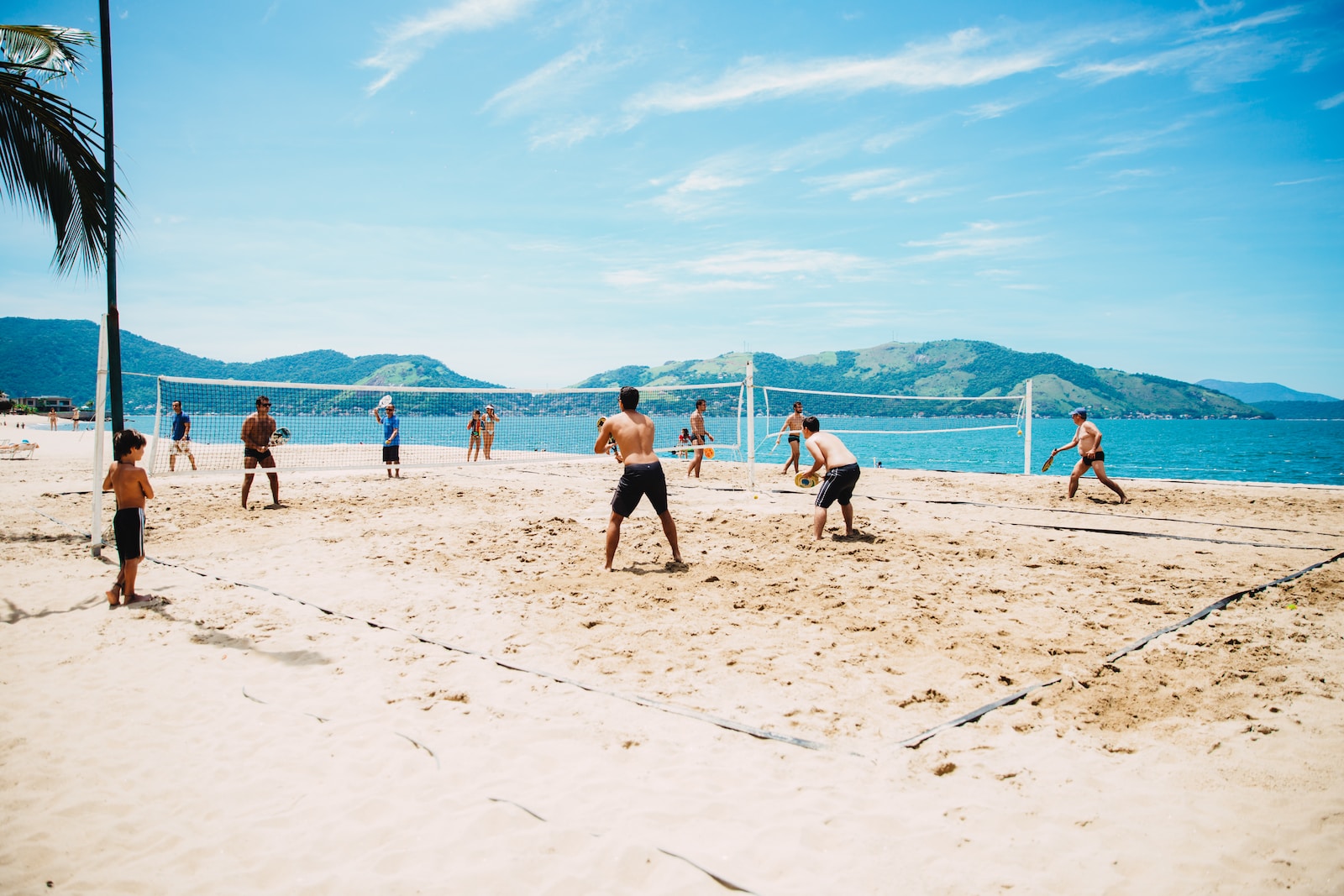Beach volleyball is a beloved sport that combines the thrill of competition with the natural beauty of sandy shores and crashing waves.
As players dive, spike, and block their way to victory, the question often arises: Can beach volleyballs go in water? It’s a topic worth exploring, as the interaction between this dynamic sport and the watery elements can have both benefits and drawbacks.
In this article, we delve into the effects of water exposure on beach volleyballs, examining the potential consequences and considerations for players and enthusiasts alike.
From understanding how water can impact the ball’s performance and durability to exploring strategies for maintenance and care, we aim to shed light on this important aspect of the game.
Can Beach Volleyball Go In the Water?
Yes, beach volleyballs can go in the water.
Beach volleyball is often played on sandy beaches where players frequently dive and jump into the water to make plays.
The balls used in beach volleyball are designed to withstand water exposure to a certain extent.
Beach volleyballs are typically made with materials that are resistant to water and can handle being submerged for short periods.
However, it’s important to note that prolonged or excessive water exposure can have negative effects on beach volleyballs.
The Material of Beach Volleyballs
Beach volleyballs are typically made with specific materials to ensure durability, performance, and resistance to outdoor conditions.
The primary material used for beach volleyballs is synthetic leather, which is a composite of polyurethane or PVC (polyvinyl chloride).
This synthetic leather is designed to withstand the wear and tear of sand, sun, and water exposure.
The outer cover of a beach volleyball is usually composed of several layers of synthetic leather, which are stitched together to create a durable and water-resistant surface.
The panels of the ball are often machine-stitched or hand-stitched, depending on the quality and brand.
The inner bladder of the volleyball, which holds the air, is typically made of rubber or a similar elastic material.
The bladder maintains the ball’s shape and provides the desired bounce during gameplay.
Some higher-end beach volleyballs may have a butyl bladder, which offers improved air retention properties.
Why Balls Lose Air When Submerged
When a ball is submerged underwater, it can lose air due to a few key factors.
The first factor is the pressure exerted by the surrounding water.
As the ball is submerged, the water exerts pressure on its surface, compressing the air inside.
This increased pressure from the water causes the air molecules within the ball to condense and reduce in volume.
Consequently, some of the air may escape through small gaps or imperfections in the ball’s structure.
Another factor contributing to air loss is the buoyancy effect.
When a ball is submerged, the water exerts an upward force on the ball, counteracting the downward force of gravity.
This buoyant force can further compress the air inside the ball, leading to a decrease in volume and subsequent air leakage.
The combination of these factors—pressure from the water, buoyancy, temperature changes, and gas dissolution—can cause a ball to lose air when submerged.
How Water Damages Beach Volleyballs
Water can potentially damage beach volleyballs due to various factors.
One of the primary concerns is the impact of moisture on the ball’s materials.
When a beach volleyball absorbs water, it can lead to changes in the ball’s weight and balance, affecting its overall performance.
Waterlogged balls tend to become heavier, making them more difficult to maneuver and reducing the accuracy and speed of shots.
Moreover, constant exposure to water can weaken the structural integrity of the ball.
If the outer cover of the volleyball is not adequately water-resistant or if there are any defects or cracks in the surface, water can seep into the ball’s interior.
This can lead to the degradation of internal components such as the bladder or the stitching, compromising the ball’s durability and lifespan.
FAQS
Can I play beach volleyball with regular indoor volleyball in the water?
It is not recommended to use a regular indoor volleyball in the water. Indoor volleyballs are not designed to withstand water exposure and may absorb moisture, become waterlogged, or suffer damage.
How long can a beach volleyball stay submerged in water?
While beach volleyballs are designed to handle water exposure, it is best to limit the time they spend submerged. Prolonged water exposure can increase the risk of water absorption and potential damage to the ball. It’s advisable to remove the ball from the water promptly after each play or dive.
Can beach volleyballs float in water?
Beach volleyballs are generally not buoyant enough to float on their own in the water. They have a weight and density that causes them to sink. However, the specific materials and construction of the ball can affect its buoyancy to some extent.
Will playing with a wet beach volleyball affect the game?
Playing with a wet beach volleyball can affect the game in various ways. The ball may become heavier, making it more challenging to control and impacting shot accuracy. Wet balls can also cause slipping or alter the ball’s trajectory due to reduced grip.
How should I clean and dry a beach volleyball after playing in the water?
After playing in the water, rinse off the ball with fresh water to remove any salt or sand. Thoroughly dry the ball with a towel, paying attention to any moisture that may have entered through the stitching. Allow the ball to air dry completely before storing it in a cool, dry place.
Can exposure to water damage the stitching of a beach volleyball?
Yes, prolonged exposure to water can potentially damage the stitching of a beach volleyball. Water absorption can weaken the thread used for stitching, leading to loosening or fraying of the seams over time. Proper drying and maintenance can help minimize this risk.
Are there specific beach volleyballs designed for water play?
Yes, some manufacturers offer beach volleyballs specifically designed for water play. These balls often have enhanced water-resistant properties, including special stitching, materials, or coatings to reduce water absorption and improve durability in aquatic environments.

